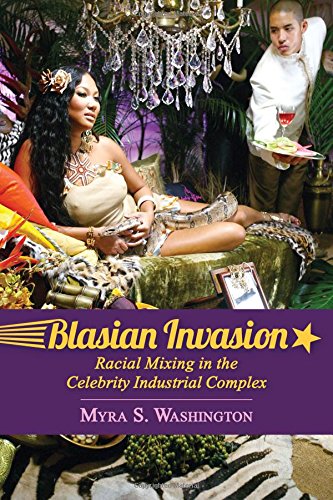

Most ebook files are in PDF format, so you can easily read them using various software such as Foxit Reader or directly on the Google Chrome browser.
Some ebook files are released by publishers in other formats such as .awz, .mobi, .epub, .fb2, etc. You may need to install specific software to read these formats on mobile/PC, such as Calibre.
Please read the tutorial at this link: https://ebookbell.com/faq
We offer FREE conversion to the popular formats you request; however, this may take some time. Therefore, right after payment, please email us, and we will try to provide the service as quickly as possible.
For some exceptional file formats or broken links (if any), please refrain from opening any disputes. Instead, email us first, and we will try to assist within a maximum of 6 hours.
EbookBell Team

4.1
50 reviewsMyra S. Washington probes the social construction of race through the mixed-race identity of Blasians, people of Black and Asian ancestry. She looks at the construction of the identifier Blasian and how this term went from being undefined to forming a significant role in popular media. Today Blasian has emerged as not just an identity Black/Asian mixed-race people can claim, but also a popular brand within the industry and a signifier in the culture at large. Washington tracks the transformation of Blasian from being an unmentioned category to a recognized status applied to other Blasian figures in media.
Blasians have been neglected as a meaningful category of people in research, despite an extensive history of Black and Asian interactions within the United States and abroad. Washington explains that even though Americans have mixed in every way possible, racial mixing is framed in certain ways, which almost always seem to involve Whiteness. Unsurprisingly, media discourses about Blasians mostly conform to usual scripts already created, reproduced, and familiar to audiences about monoracial Blacks and Asians.
In the first book on this subject, Washington regards Blasians as belonging to more than one community, given their multiple histories and experiences. Moving beyond dominant rhetoric, she does not harp on defining or categorizing mixed race, but instead recognizes the multiplicities of Blasians and the process by which they obtain meaning. Washington uses celebrities, including Kimora Lee, Dwayne Johnson, Hines Ward, and Tiger Woods, to highlight how they challenge and destabilize current racial debate, create spaces for themselves, and change the narratives that frame multiracial people. Finally, Washington asserts Blasians as not only evidence for the fluidity of identities, but also for
the limitations of reductive racial binaries.